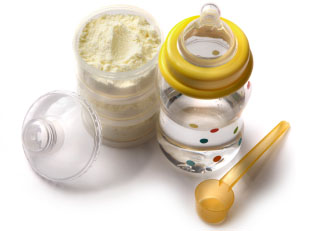As if breastfeeding wasn’t difficult enough, a variety of issues can develop as a result. Although this is particularly true for new moms, some of these problems can arise throughout the breastfeeding journey. Taking immediate steps to solve the problem is essential to healthy breastfeeding. It's also important to realize that it's not your fault if you are having difficulties with breastfeeding. Here’s a look at some of the more common problems that may present as both mom and baby learn how to breastfeed.
Sore Nipples
Technically, if everything goes absolutely perfectly, your nipples aren’t supposed to become chapped and uncomfortable. Unfortunately, particularly for first-time moms, it can be difficult to get a handle on the exact position to hold your newborn. Additionally, not all babies latch correctly in the beginning. The first few days may be extremely painful -- your nipples may feel bruised, chapped, and even cracked or abraided. Keep your nipples clean and dry, apply a layer of lanolin, and try a hydrogel pad (they look like clear, silver dollar sized suction cups) if it gets really bad. Work with a lactation consultant through your doctor, hospital, or programs like Women, Infants, Children (WIC) to make sure both of you are in the best breastfeeding position.
Engorgement
The first week after you give birth your milk will come in, and this causes a day or two of extremely full breasts. They may appear swollen, be a little tender, and even seem warm to the touch. This is completely normal. What isn’t normal is for this to continue and become painful. If your baby isn’t eating often or fully, you may not be releasing enough milk; this can also happen if you spend a few days apart. You’re body continues to produce milk even though you’re not getting rid of any. The breasts may become uncomfortable, heavy, or hard, while the skin takes on a tight, almost shiny appearance. You may even get a low fever. The bigger they get, the more the nipple flattens, making it even more difficult for your baby to latch on. If nothing is done, this can lead to a clogged milk duct, mastitis, or a more permanent decrease in milk production. Nurse as often as you can, pump when it isn’t possible, and talk to a lactation specialist to make sure your baby is latching on correctly and getting enough to eat.
Clogged Milk Ducts
Without sufficient release, your milk ducts can become blocked up, turning into a hard, round lump in your breast. Part of your breast may become inflamed, red, and warm. Clogged ducts are relatively common, especially in the first few weeks or during times when your baby is feeding less often (such as when they first begins sleeping through the night). Most of the time, this will go away in a few days with the use of heating packs, extra nursing or pumping, and a little ibuprofen (although you should always talk to your doctor or pediatrician before taking medication while nursing). Occasionally, however, infection can occur, causing mastitis.
Mastitis
Mastitis is an infection of the breast. If you have the symptoms of a plugged milk duct in addition to flu-like symptoms -- like a fever, achiness, or excessive fatigue (beyond new mom exhaustion) -- you may have mastitis. If you think that you have mastitis, it’s extremely important to see your doctor to get antibiotics or other appropriate treatment. Especially since the bacteria Staphylococcus aureus can be a contributing factor -- especially when the infection is present in both breasts.
Low Milk Production
Low milk production can be a side effect of unmanaged engorgement, but it also occurs in some women for unknown reasons -- no matter how hydrated you stay, how well you eat, or how hard you try. It can be extremely frustrating and emotionally devastating. It’s important to figure this out early on so you can try other methods or start supplementing with formula before your baby loses too much weight. If you’re experiencing insufficient milk production, try pumping immediately following every feeding to encourage your breasts to make extra milk, and give your lactation consultant a call.



